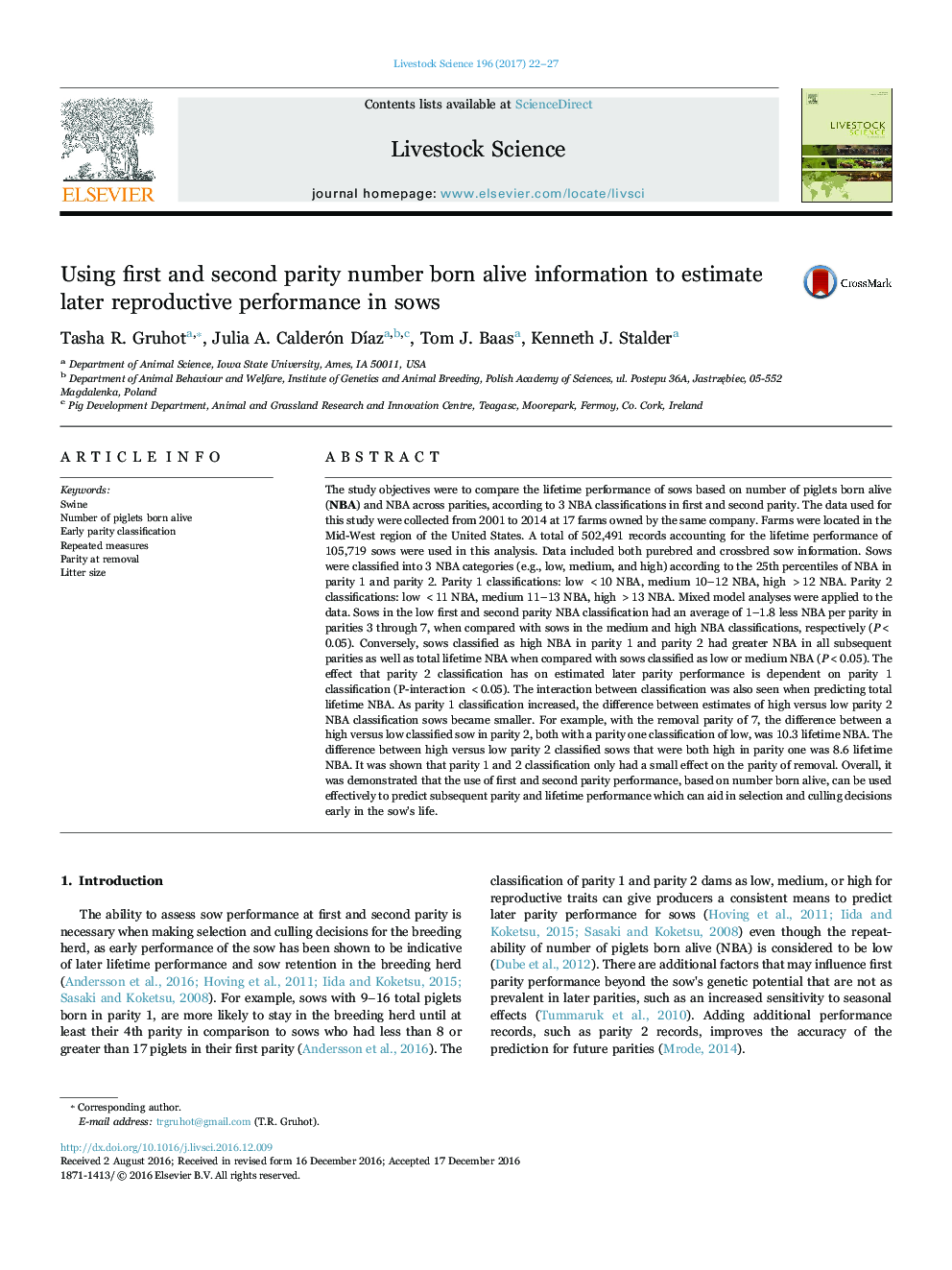| کد مقاله | کد نشریه | سال انتشار | مقاله انگلیسی | نسخه تمام متن |
|---|---|---|---|---|
| 5542962 | 1553936 | 2017 | 6 صفحه PDF | دانلود رایگان |
عنوان انگلیسی مقاله ISI
Using first and second parity number born alive information to estimate later reproductive performance in sows
ترجمه فارسی عنوان
با استفاده از شماره اول و دوم تقسیم تعداد اطلاعات به دست آمده زنده به منظور تخمین عملکرد بعدی باروری در گاو
دانلود مقاله + سفارش ترجمه
دانلود مقاله ISI انگلیسی
رایگان برای ایرانیان
کلمات کلیدی
سوسیس، تعداد خوک زنده زنده است، طبقه بندی زودیت زودرس، اقدامات تکراری، تقارن در حذف، اندازه لتر،
موضوعات مرتبط
علوم زیستی و بیوفناوری
علوم کشاورزی و بیولوژیک
علوم دامی و جانورشناسی
چکیده انگلیسی
The study objectives were to compare the lifetime performance of sows based on number of piglets born alive (NBA) and NBA across parities, according to 3 NBA classifications in first and second parity. The data used for this study were collected from 2001 to 2014 at 17 farms owned by the same company. Farms were located in the Mid-West region of the United States. A total of 502,491 records accounting for the lifetime performance of 105,719 sows were used in this analysis. Data included both purebred and crossbred sow information. Sows were classified into 3 NBA categories (e.g., low, medium, and high) according to the 25th percentiles of NBA in parity 1 and parity 2. Parity 1 classifications: low <10 NBA, medium 10-12 NBA, high >12 NBA. Parity 2 classifications: low <11 NBA, medium 11-13 NBA, high >13 NBA. Mixed model analyses were applied to the data. Sows in the low first and second parity NBA classification had an average of 1-1.8 less NBA per parity in parities 3 through 7, when compared with sows in the medium and high NBA classifications, respectively (P<0.05). Conversely, sows classified as high NBA in parity 1 and parity 2 had greater NBA in all subsequent parities as well as total lifetime NBA when compared with sows classified as low or medium NBA (P<0.05). The effect that parity 2 classification has on estimated later parity performance is dependent on parity 1 classification (P-interaction <0.05). The interaction between classification was also seen when predicting total lifetime NBA. As parity 1 classification increased, the difference between estimates of high versus low parity 2 NBA classification sows became smaller. For example, with the removal parity of 7, the difference between a high versus low classified sow in parity 2, both with a parity one classification of low, was 10.3 lifetime NBA. The difference between high versus low parity 2 classified sows that were both high in parity one was 8.6 lifetime NBA. It was shown that parity 1 and 2 classification only had a small effect on the parity of removal. Overall, it was demonstrated that the use of first and second parity performance, based on number born alive, can be used effectively to predict subsequent parity and lifetime performance which can aid in selection and culling decisions early in the sow's life.
ناشر
Database: Elsevier - ScienceDirect (ساینس دایرکت)
Journal: Livestock Science - Volume 196, February 2017, Pages 22-27
Journal: Livestock Science - Volume 196, February 2017, Pages 22-27
نویسندگان
Tasha R. Gruhot, Julia A. Calderón DÃaz, Tom J. Baas, Kenneth J. Stalder,
